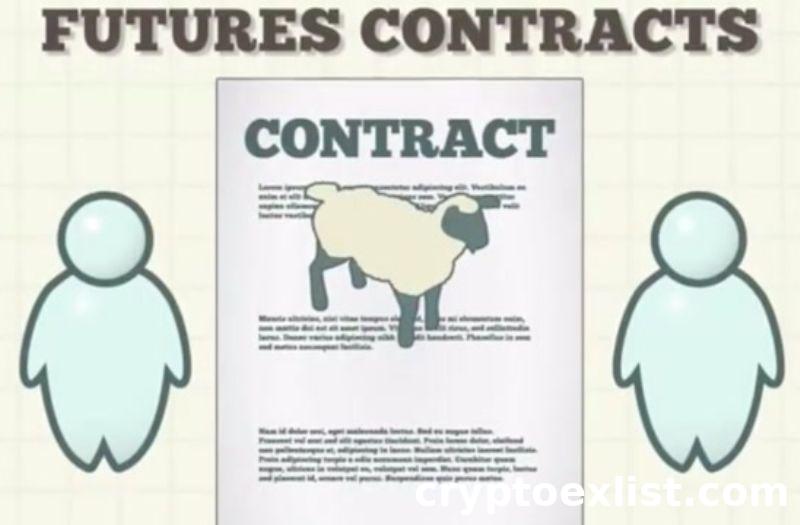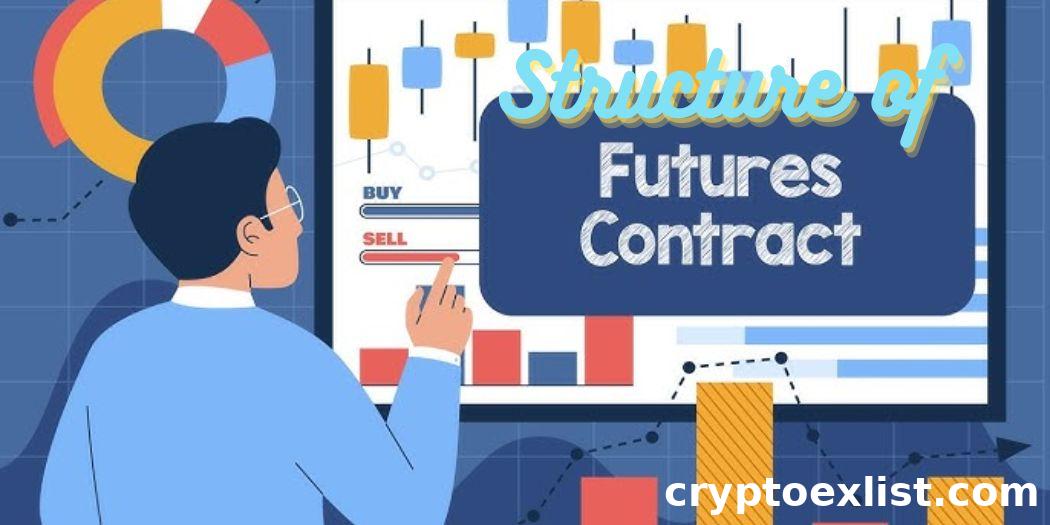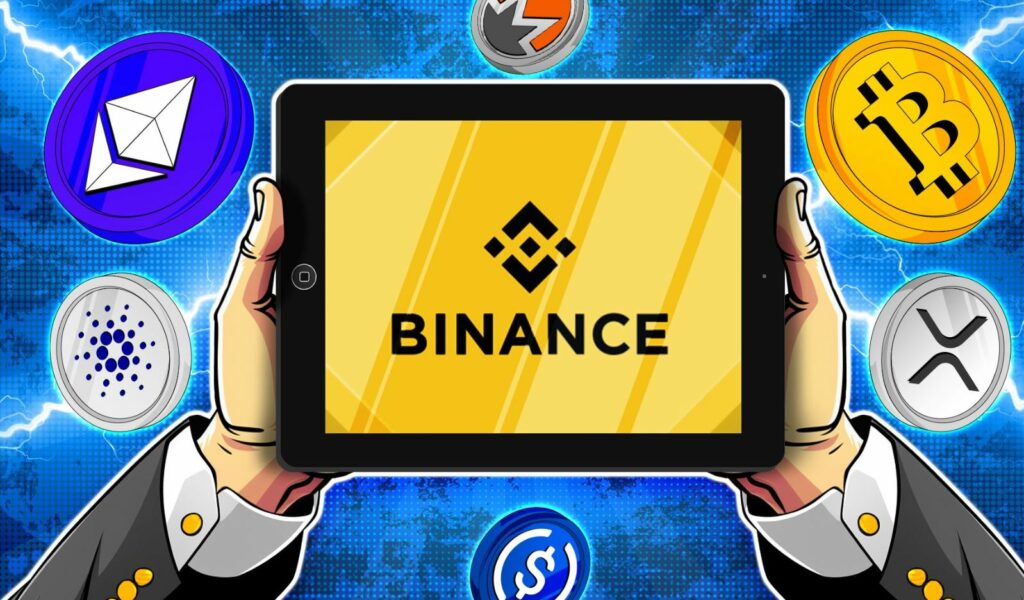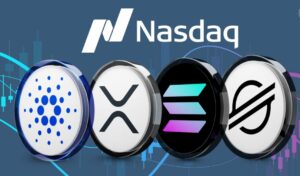
Futures contracts are essential tools in modern financial markets, allowing traders to hedge risks, speculate on asset prices, and capitalize on market movements. Whether you’re new to Binance Futures or a seasoned trader, understanding the structure of futures contracts is key to building a solid trading strategy. In this guide, we will explore the fundamental components of futures contracts, how they work, and the role of technological advancements in shaping the futures trading landscape. With a focus on key elements like underlying assets, margin requirements, and settlement methods, this overview is designed to give newcomers a friendly introduction to futures trading on Binance.
Introduction to Futures Contracts
Definition of Futures Contracts
A futures contract is a standardized agreement between two parties to buy or sell an asset at a predetermined price on a specified future date. Unlike spot trading, where assets are traded instantly, futures contracts allow traders to speculate on the future price of an asset, such as cryptocurrencies, without owning the underlying asset. On Binance exchange, futures contracts offer traders the flexibility to go long (betting that the price will rise) or short (betting that the price will fall), making them a versatile tool for both risk management and profit generation. Futures trading is ideal for traders who want to capitalize on market movements without having to buy or hold the actual cryptocurrency.
Importance in Financial Markets
Futures contracts play a critical role in global financial markets by providing liquidity, facilitating price discovery, and allowing market participants to hedge against price volatility. For instance, businesses use futures contracts to lock in prices for commodities, while cryptocurrency traders use them to mitigate risk or amplify potential gains. On platforms like Binance, the futures market is essential for both professional traders and retail investors, as it enables them to manage risks in highly volatile markets like crypto. By allowing traders to bet on both rising and falling prices, futures trading helps maintain balance in the market, making it a crucial component of the financial ecosystem.

Key Components of a Futures Contract
Underlying Assets
The underlying asset in a futures contract refers to the specific asset being bought or sold at a future date. In the case of Binance Futures, the underlying assets are primarily cryptocurrencies like Bitcoin, Ethereum, and other altcoins. The value of the futures contract is derived from the price of these underlying assets. Traders use futures contracts to speculate on whether the price of the asset will go up or down without having to own the actual asset. Understanding the underlying asset is crucial, as its market movements will determine the profit or loss of your futures trade.
Contract Size
The contract size refers to the amount of the underlying asset represented by a single futures contract. On platforms like Binance, the contract size can vary depending on the cryptocurrency and the type of contract you’re trading. For instance, a contract may represent one unit of Bitcoin or a fraction of an Ethereum coin. It’s important for traders, especially beginners, to understand the contract size before placing trades, as this directly impacts the amount of leverage used and the potential profit or loss in a position.
Expiration Date
The expiration date is the point at which the futures contract must be settled, meaning the asset must either be bought or sold at the agreed-upon price. On Binance Futures, traders can choose between contracts with different expiration dates, including weekly, monthly, or even perpetual contracts, which don’t have a set expiration date. Expiration dates are key because they determine when the contract will settle, and can also affect liquidity and price volatility as the expiration date approaches. It’s vital to keep track of this date, as holding a contract to expiration without proper strategy could lead to unintended outcomes.
Price Quotation
Price quotation refers to how the price of the futures contract is displayed, and it’s usually based on the underlying asset’s spot price. On Binance, the price of futures contracts is closely linked to the real-time market price of cryptocurrencies like Bitcoin or Ethereum. However, due to market volatility, there may be slight differences between the futures contract price and the spot price, known as basis. Understanding how price quotations work is essential for placing trades at the right moment and managing risk in the futures market, especially when using leverage to amplify positions.
Types of Futures Contracts
Commodity Futures
Commodity futures involve contracts based on physical assets such as oil, gold, or agricultural products like wheat or coffee. These contracts allow traders to speculate on the future price movements of these commodities. In traditional financial markets, commodity futures are widely used by producers and buyers to hedge against price fluctuations, while speculators seek to profit from these changes. Although Binance focuses on cryptocurrency futures, understanding commodity futures provides a solid foundation for grasping how futures contracts work in other sectors. In the volatile world of commodities, futures contracts offer a way to manage risk and capitalize on market trends.
Financial Futures
Financial futures are contracts based on the future value of financial instruments, such as bonds or interest rates. These are commonly used by traders looking to hedge against interest rate fluctuations or speculate on the direction of financial markets. While Binance offers futures contracts in cryptocurrencies rather than traditional financial instruments, the principle behind financial futures remains the same: traders aim to profit from or protect themselves against market movements. For those diving into the world of cryptocurrency futures, learning about financial futures can provide deeper insights into how large institutional investors use these tools to manage their portfolios.
Currency Futures
Currency futures are contracts that allow traders to speculate on the future exchange rates of various currencies, such as the U.S. dollar, euro, or yen. These contracts are popular among businesses that engage in international trade, as they help mitigate the risk of adverse currency fluctuations. On Binance, while futures trading revolves around cryptocurrencies, the concept of currency futures is similar. Crypto traders speculate on the future price of digital assets like Bitcoin or Ethereum, much like currency traders do with traditional fiat currencies. Understanding currency futures can help beginners grasp the mechanics of trading pairs and price speculation in the crypto space.
Index Futures
Index futures are futures contracts based on a market index, such as the S&P 500 or NASDAQ. These contracts allow traders to speculate on the overall movement of a stock market or sector rather than individual assets. While Binance does not offer traditional index futures, traders on the platform can think of cryptocurrency futures as functioning similarly, with the overall crypto market often moving in tandem. Index futures are widely used for hedging or speculating on market-wide trends, and they can serve as a useful analogy for traders looking to better understand how to trade broad market movements in the cryptocurrency space.

How Futures Contracts Work
Long and Short Positions
In futures trading, traders have the option to take long or short positions, depending on their market outlook. A long position is taken when a trader believes the price of an asset, like Bitcoin or Ethereum, will increase. In this case, they commit to buying the asset at a future date. Conversely, a short position is taken when a trader expects the asset’s price to fall. This means they agree to sell the asset at a future date, aiming to profit from the price decrease. On platforms like Binance, both long and short positions are widely used by traders to capitalize on price movements in the highly volatile cryptocurrency market. The flexibility to go long or short makes futures trading a powerful tool for managing market risks and maximizing opportunities.
Margin Requirements
Margin requirements are a critical aspect of futures trading, as they determine the amount of capital you need to open and maintain a position. Unlike spot trading, where you buy an asset outright, futures trading on Binance allows you to trade with leverage, meaning you only need a fraction of the contract’s value as collateral, called initial margin. As the market moves, you may need to add more funds, known as maintenance margin, to keep the position open. If the margin balance falls below a certain level, your position could be liquidated to cover losses. Understanding how margin works is essential for risk management, especially in highly leveraged trades where even small price movements can have significant impacts.
Mark-to-Market Mechanism
The mark-to-market mechanism in futures trading ensures that the value of open positions is adjusted daily to reflect current market prices. This means that any unrealized gains or losses are credited or debited from your account at the end of each trading day. On Binance Futures, this system helps maintain fairness by regularly updating the contract’s value based on market fluctuations. If the market moves in your favor, your account will be credited with the profits. However, if the market moves against you, losses will be deducted, and you may need to add funds to maintain your margin. Mark-to-market ensures that traders’ positions are constantly in line with the asset’s real-time price, making it a crucial part of risk management in futures trading.
Pricing Futures Contracts
Spot Price vs. Futures Price
In futures trading, there’s a distinction between the spot price and the futures price of an asset. The spot price is the current market price at which an asset, such as Bitcoin or Ethereum, can be bought or sold immediately. On the other hand, the futures price refers to the agreed-upon price for a futures contract, which settles at a specific date in the future. On Binance Futures, the price of a futures contract may differ from the spot price due to factors like market sentiment, demand, and time until the contract’s expiration. Understanding this difference is essential for new traders, as it helps you assess whether a futures contract is trading at a premium (higher than the spot price) or a discount (lower than the spot price).
Factors Affecting Futures Prices
Several factors can influence futures prices, making them fluctuate differently from the spot price. These include supply and demand dynamics, interest rates, and market sentiment. Additionally, for cryptocurrency futures, factors like network upgrades, regulatory news, and adoption rates can create significant price changes. On Binance, futures prices are also affected by funding rates—a mechanism used to keep futures prices in line with the spot price. Traders need to keep these factors in mind when predicting price movements, as futures prices don’t always follow the spot market exactly, particularly in volatile markets like crypto.
Cost of Carry Model
The Cost of Carry Model is a financial concept used to determine the futures price based on the cost of holding (or carrying) the asset until the contract’s expiration. These costs include things like storage fees, insurance, and interest rates for physical commodities. For cryptocurrencies, the cost of carry is influenced by factors such as borrowing costs and the opportunity cost of locking capital in a position. On Binance, while futures trading in cryptocurrencies doesn’t involve physical storage costs, traders should still account for funding rates and other costs associated with holding a futures contract. Understanding the cost of carry helps traders evaluate whether a futures contract is priced fairly relative to the spot price and how external factors might influence their positions over time.
Futures Contract Settlement
Physical Delivery vs. Cash Settlement
Futures contracts can be settled in two primary ways: physical delivery or cash settlement. In physical delivery, the actual asset is exchanged at the contract’s expiration. For instance, in commodities trading, this could mean the physical delivery of oil or gold. However, in the context of cryptocurrency futures on Binance, settlement is done via cash settlement, meaning no actual cryptocurrency changes hands. Instead, the difference between the contract price and the current market price is settled in cash. This method is more practical for crypto traders, as it allows them to profit from price movements without the need to own the underlying asset.
Process of Closing Futures Positions
Closing a futures position is a crucial part of futures trading. To close a position on Binance Futures, traders can execute an equal but opposite trade. For instance, if you have taken a long position (buying a futures contract), you would close it by selling the same contract. Similarly, a short position (selling a contract) is closed by buying the contract. It’s important to monitor your positions, especially as the expiration date approaches, as leaving a position open without action may result in automatic settlement. Closing positions before the settlement date allows traders to lock in profits or limit potential losses based on market movements.
Implications of Settlement Methods
The settlement method of a futures contract has important implications for traders. In cash-settled contracts like those on Binance, traders don’t need to worry about handling the actual asset. This makes futures trading more accessible, especially in the cryptocurrency market, where managing physical assets can be complicated. Cash settlement also allows for more flexibility, as traders can easily enter and exit positions without logistical concerns. However, it’s essential to be aware of the settlement date, as failing to close a position before this date could result in losses if the market moves unfavorably. Understanding how settlement works enables traders to develop better strategies and manage their risk effectively.
Technological Advancements in Futures Trading
Algorithmic Trading
Algorithmic trading has revolutionized futures trading, enabling traders to execute orders at lightning speed based on predefined criteria. In simple terms, algorithmic trading uses computer programs to automatically execute trades when certain market conditions are met. On platforms like Binance, traders can leverage these algorithms to take advantage of market opportunities 24/7, without having to manually monitor price movements. By using algorithms, even new traders can implement complex strategies like market-making or arbitrage. This technology enhances precision, reduces the emotional impact on decision-making, and helps traders act quickly in the fast-paced world of futures markets.
Blockchain Technology
Blockchain technology plays a significant role in futures trading, particularly in the cryptocurrency space. The decentralized and transparent nature of blockchain ensures that transactions are secure and verifiable, which is crucial for futures contracts involving digital assets. Platforms like Binance use blockchain to ensure the integrity of transactions and maintain a transparent ledger of trades. Additionally, the use of smart contracts — self-executing contracts with the terms of the agreement directly written into code — allows for more efficient and automated futures trading. Blockchain technology enhances trust, reduces counterparty risk, and provides a new layer of security that traditional financial systems cannot match.
Online Trading Platforms
With the rise of online trading platforms like Binance, futures trading has become more accessible than ever. Traders can easily open accounts, access real-time market data, and execute trades from anywhere with an internet connection. Platforms like Binance offer a range of tools, including advanced charting features, educational resources, and risk management systems, making it easier for beginners to start trading futures. The user-friendly interface and accessibility of these platforms democratize futures trading, allowing both retail and professional traders to engage with the market seamlessly. Moreover, mobile apps ensure that traders can stay connected and manage their positions on the go, increasing flexibility in this fast-moving environment.

Conclusion
Understanding the structure and mechanics of futures contracts is crucial for anyone looking to engage in futures trading on platforms like Binance. From the types of contracts available to the role of technological innovations like algorithmic trading and blockchain, futures trading offers numerous opportunities for profit and risk management. However, it’s important to grasp key concepts such as margin requirements, price quotation, and settlement methods to navigate the market confidently. By mastering these elements, traders can optimize their strategies and make informed decisions that align with their financial goals. Futures trading is a dynamic and evolving field, and with the right knowledge, anyone can start their journey successfully.























